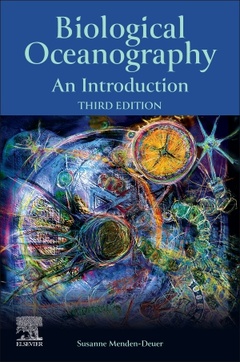Biological Oceanography (3rd Ed.) An Introduction
Auteur : Menden-Deuer Susanne

An Introduction to Biological Oceanography is completely revised and updated based on the prior edition by Carol M. Lalli and Timothy Parsons. This revision aims to provide scientific understanding of how biological processes in the ocean work and how they are affected by physical, chemical and geological processes. This understanding is foundational for humans to assess our impact on the oceans, how to best implement conservation and management practices and ultimately, ensure sustainability of the many ways humans depend on the ocean. A rich tapestry of images supports the text, including data figures, info-graphics and artistic renditions. Since the book was last published, major new discoveries, including a new domain of life and global human impacts that change the oceans and biosphere have required a revision and amendment of the prior edition. However, many themes in this book remain timeless, such as the interactions of light with water and the importance and beauty of species diversity. A major theme is to develop intuition and predictive skills to relate environmental conditions with biological processes and structures, such as production and food webs across seasons or latitudes. This volume is designed so that it can be read on its own. The science of oceanography as a whole is multidisciplinary, and early chapters include fundamental principles in physics, chemistry and geology to highlight how underlying mechanisms constrain biological processes in the ocean. For the same reason, there is also some basic biology, particularly ecology covered.
1. The Ocean makes Earth Habitable Water 2. The abiotic environment 3. Marine environments and their drivers 4. Marine Biodiversity and Biogeography 5. Primary production 6. Secondary production and trophic transfer 7. The biogeochemical footprint of ocean biology 8. What about me? Ocean Biology and the human species 9. Ocean biology and climate change 10. Challenges ahead
Appendices: Units, Conversions, Maps Problems with answersA day on a research ship
I have been teaching Biological Oceanography and related topics since the early 2000s (first as TA for ‘Ocean 101’).
After receiving a ‘Diploma’ in Biology from the University of Bonn, with research done at the Alfred Wegener Institute in Bremerhaven, Germany, I pursued M.Sc. and Ph.D. degrees in Oceanography at the University of Washington. Before becoming a faculty member at the Graduate School of Oceanography at the University of Rhode Island was a lecturer at Western Washington University’s Shannon Point Marine Center and a research fellow at Princeton University.
- Enhances learning opportunities with questions and answers and conversion and unit charts, along with maps and color images
- Introduces students to ocean and marine organisms and the importance of these organisms, including microbes which have not yet been fully covered in any other marine biology texts
- Presents a look to the future, with challenges ahead, but also shows the issues that have been solved by science so far (ozone hole, acid rain)
Date de parution : 01-2025
Ouvrage de 500 p.
15x22.8 cm
Thèmes de Biological Oceanography :
Mots-clés :
Marine; Ecology; Fisheries; Plankton Photosynthesis; Food Webs; Production; biogeochemical; Climate Change; Biodiversity



